 |

|
| Home | Systems | Research | Publications | People | Contact |
| RESEARCH GROUPS @ CIRES > |
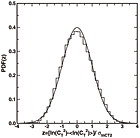
Turbulence Variability
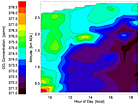 CO2 Concentrations
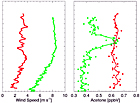
Trace Gases
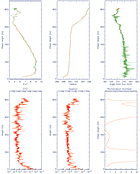 NBL Structure |
Research Applications
|
 Click on image for larger version. |
 Click on image for larger version. |
The left panel shows the appearance of the sharp temperature interface that accompanies the collapse of the Low Level Jet. The straight line to the right-hand side of each plot depicts the 9.8 K km-1 dry adiabatic lapse rate. The right panel shows the drop in altitude of the interface as seen by four vertically spaced turbulence packages.
The figure below shows how a succession of profiles collected at 15 minute intervals provides an excellent description of the evolution of the NBL temperature, velocity, and turbulence profiles.

Click on image for larger version.
The TLS is also capable of deriving stability profiles such as Brunt Vaisala frequency N and Richardson number Ri which can be compared with the concurrent measurements of turbulence.

Click on image for larger version.
For further details see the related publication:
Balsley BB, Frehlich RG, Jensen ML, et al.: "Extreme gradients in the nocturnal boundary layer: Structure, evolution, and potential causes". JOURNAL OF THE ATMOSPHERIC SCIENCES 60 (20): 2496-2508 OCT 2003.
Balsley BB, Fritts D, Frehlich RG, et al.: "Up-gully flow in the great plains region: A mechanism for perturbing the nighttime lower atmosphere?". GEOPHYSICAL RESEARCH LETTERS 29 (19): Art. No. 1931 OCT 1 2002.

Turbulence Statistics
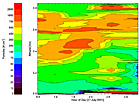
Aerosol Distribution

Field Verifications

Wave-Turbulence Inter